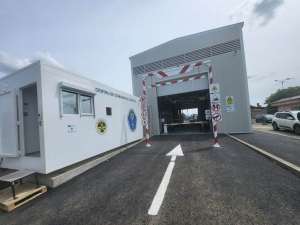Last week, the European Commission (EC) proposed several measures for the recovery and the resolution of the crises in the banking system. Among other things, these involve the giving authorities the ability to get involved and force the banks to implement rescue plans, to partly or totally sell their assets and to recapitalize the lenders in question, by cancelling or diluting shares, as well as by reducing their receivables or converting them into stock.
The proposals represent an essential step towards the creation of a banking union within the European Union, said the president of the European Commission, Jose Manuel Barroso. They will also determine the banking system to be more responsible, he considers. "Thus, we will contribute to the onset of an environment of stability and confidence in the EU, working on the consolidation and the stronger integration of our interdependent economies", the president of the European Commission said.
The goal of the proposed norms is to guarantee that in the future, the authorities will have the necessary means to intervene decisively both before the appearance of potential problems, as well as in the first stage of potential crisis situations. Furthermore, if the financial situation of a bank degrades irremediably, those measures would help maintain the critical functions of the lender, whereas the afferent costs of the restructuring and resolution would be borne by the owners and creditors, not by the taxpayers.
The framework relies on the measures which several member states adopted in order to improve the national banking resolution systems. The proposed instruments fall under three categories: prevention, early intervention and resolution, respectively.
Michel Bernier, the commissioner for the internal market, explained that the proposals of the Commission represent the last stage in the fulfilling of the commitments made in the G20 for a better oversight of the financial sector. He said that there is a need for the public authorities to have available the necessary instruments to handle the potential future banking crises. "Otherwise, the citizens will once again continue to bear the financial consequences of these crises, whereas the bailed out banks will continue to proceed in the same manner, knowing that they will be bailed out again", the European official considers.
On Sunday, Werner Faymann, the Austrian chancellor, said that the support for the creation of a banking union with strict oversight and regulation. He said it was a mistake that the European currency was introduced in the absence of the necessary control instruments. On the other hand, Germany doesn't see the banking union as a short term solution, as it can be considered over a longer period of time
• Reuters: There is an attempt to redesign the European construction, even as its core is being threatened
Architects and firemen are making efforts to rescue the Eurozone from destruction, attempting to redesign the building even as the flames have passed the outside walls and are affecting its inside, a Reuters study says. But just like in the entire period which has elapsed since the beginning of the sovereign debt crisis at the end of the year 2009, the former are a working at a different pace than the latter, which creates the risk of the building burning down by the time the new improvements will be approved and implemented. The process for the redesigning of the European construction will take months, if not years, at a time when investor confidence in the ability of the European leaders to keep the sovereign debt crisis at bay decreases daily, the author considers.
The crisis strongly accelerates the reform of the Eurozone, and the leaders of the European Union are working on ideas for the creation of a fiscal and banking Union which they would present in the reunion of June 28th and 29th. But amending the treaties and persuading the 27 EU members to ratify these amendments are unavoidably slow.
The president of the European Council, Herman Van Rompuy, said that the measures in question are only a part of the construction, as detailed blueprints will only be presented in October. According to an internal document of the German government, obtained by Reuters, the authorities in Berlin expect an agreement of the redesign of the Eurozone to be reached only in March next year, which would then be redesigned by the ratification of the member states. Considering the current state of the financial markets, the deadline seems to be light years away, according to the author.
• Călin Rechea: The new measures will not solve the problems in the banking system
Economic analyst Călin Rechea expressed his scepticism when it comes to the potential of the proposals of the European Commission to solve the problems which currently exist in the banking system, as well as the ones which might appear in the future. He thinks that the institutions in charge of regulating the banking system suffer from a lack of credibility, considering that they were unable to prevent the current situation. The measures proposed by the European Commission include significant discretionary measures, which open gateways for political pressures, as well as for pressure on the level of the banking system, the economic analyst said.
• The prevention of banking crises
According to the plan, the banks will be required to establish the measures they will use if the financial situation deteriorates. The authorities in charge of the resolution of lenders will need to draft resolution plans which would also include options for the banks whose situation is critical and which are no longer viable, as well as ensuring the continuity of the critical functions. The plans for recovery and resolution will be drafted both on a banking system level, as well as on an individual level, for each bank. If the planning process encountered obstacles which prevented resolution, the authorities would be allowed to force a bank to change its legal or operational structure, meaning that the available resolution instruments would become available for it.
The financial groups can conclude intra-group support agreements to stop the evolution of a crisis and to ensure the financial stability of the group. The institutions of a group will be allowed to provide financial support, in the form of loans, guarantees or assets which will be useable as real guarantees in transactions, to other entities which are faced with financial difficulties, subject to approval by the regulatory authorities and by the shareholders of every entity participating in the agreement.
• Early intervention
The early intervention mechanisms set off the moment a lender no longer meets or is about to no longer meet the mandatory capital requirements. The authorities can require the bank in question to implement the recovery measures, to elaborate an action plan and a calendar for its implementation and to summon a shareholder meeting for the passing of urgent decisions. They can also ask the lender to come up with a plan for restructuring the debt together with the lenders.
If the financial situation of a bank suffers a considerable degradation, and the available instruments are not available for recovery, the authorities will be able to appoint a special administrator, for a limited period of time. The main of the administrator would be to restore the financial stability and the cautious management of the activity.
• Resolution
If preventive measures and early prevention measures do not succeed in preventing the situation from deteriorating to the point where the bank enters or could enter a state of crisis, the resolution process is adopted. If it is established that there can be no alternative solutions which would allow the avoiding of the crisis and that the public interest is at stake (in matters such as the access to the critical functions of the bank, the financial stability or the integrity of the public finances), the authorities will have to take over the control of the financial institution and to initiate "decisive actions" in order to achieve resolution, according to the communiqué of the European Commission.
The authorities may fully or partially sell, any troubled bank to another bank. Also, they will be allowed to use the bridge-loan instrument, which involves finding the "good" assets, the essential functions of the bank, and their separation by creating a bridge-bank, which would then be sold to another entity. The old bank, with toxic assets and non-essential functions, would then be liquidated according to the usual insolvency procedures.
Another resolution instrument consists of transferring the toxic assets of the bank to an asset management vehicle, which allows the balancing of the bank's balance sheet. In order to use of this instrument exclusively as a state aid measure, the framework stipulates its use only in conjunction with another instrument (bridge-bank, the sale of operations or debt reduction). In this manner, the bank is supported, and at the same time is the object of a restructuring process.
Another resolution manner involves the recapitalization of the bank which is in trouble by cancelling or diluting the shares and by reducing the debt or converting it into stock. An institution for which no private buyers will have been found or which would be difficult to continue so as to provide such essential services without require and injection of public funds, and the authorities would have the necessary time to reorganize or to liquidate certain activities in an organized manner. In this regard, a certain percentage of the total liabilities of the bank will be mandatorily made up of instruments eligible for internal recapitalization. If the process takes place, they will depreciate in a predefined order depending on the age of the debt, meaning that it would reestablish the viability of the institution.
In the absence of market financing and in order to avoid the financing by the state of the resolution instruments, the funds for them will come from bank contributions, based on their individual liabilities or risk profiles. Those funds will need to have a large enough capacity, to reach 1% of the deposits covered, within 10 years. They will be used exclusively to support the reorganization and the resolution under good circumstances, and to avoid, in the future, the need to solve the troubled banks. The national resolution funds will interact, especially in order to provide financing for the resolution of the transnational banks.




























































